1975
Changing Times
Urbanisation has slowly chipped away at the social fabric of local community life and, today, the craft of jajam making has lost its patrons and appreciators. Since the mid-20th century demand has slowly diminished, with only a handful of printers retaining the skills, resources and resolve to continue. In an attempt to keep up with changing times, many chhipa printers crossed over to inexpensive chemical dyes.
In recent years, a culture of consumerism and competition has taken over and the sense of community living has dissolved. Societies that once gathered together, making collective decisions and celebrating festivals, have all but disappeared. The art of dyeing and printing has also started to be affected. Deforestation within India’s jungles means it is more and more difficult to source natural ingredients. Traditional dyeing and washing processes are an increasingly rare sight as rivers run dry.
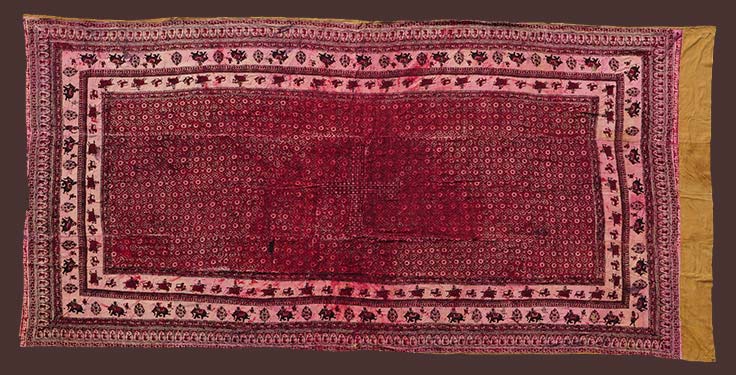
In the Dablana (South East Rajasthan) Jajam exhibited here, the red dye flows into many areas. Printers would frequent Mej river banks for washing and achieving clarity in their natural dyes, especially while handling large textiles. As the river perished, so did the stories of craft in these printing villages.
Customized
Jajam was made to order in large sizes to accommodate community gatherings in a village or, for guests coming to a life ceremony. It was customized according to the space, for example, as big as a courtyard in a temple or a house. This floor covering could be as large as one’s imagination.
The biggest jajam we found in a community temple
Jajam made for household purposes
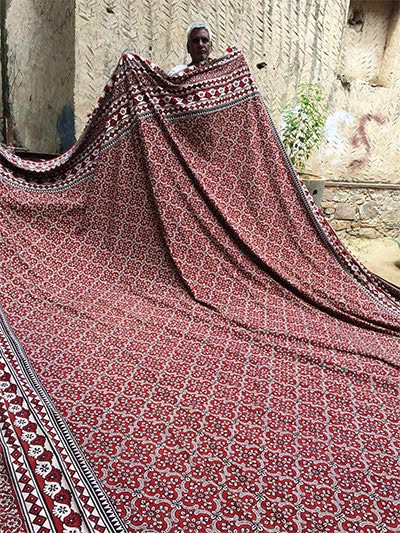
Design
Jajam owes its innovative designs to the traditions that brought them to life. Printed on thick hand-woven cotton fabric, they often featured motifs from local architectural designs and would also celebrate the rich wildlife of a region. Tigers, elephants, soldiers, or mounted warriors might surround the stacked geometric designs of the central field like symbolic protective figures to create a safe space in which people played chaupad and conversed.
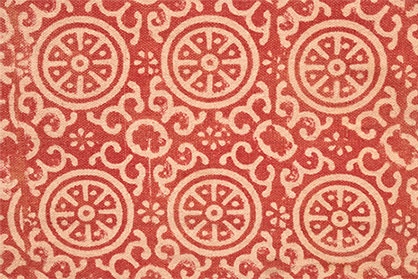
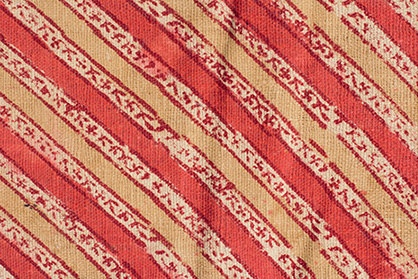
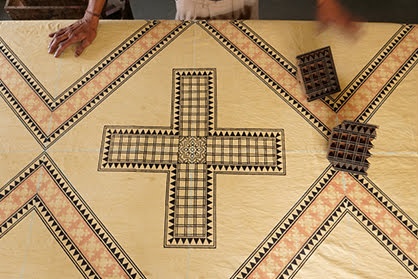
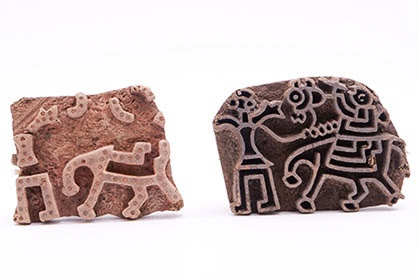
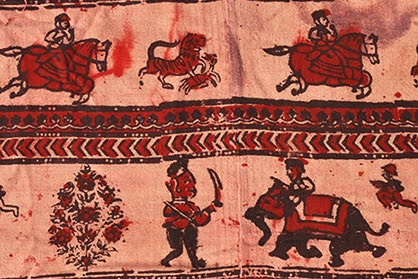
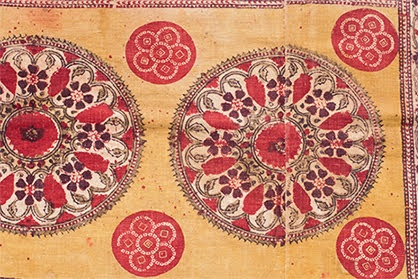
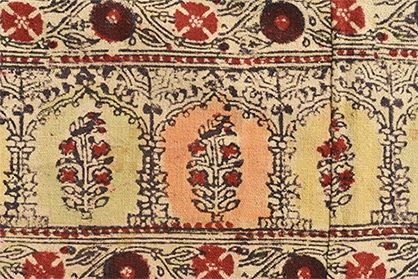
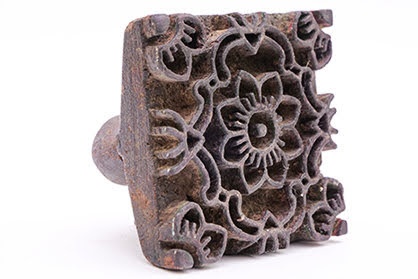
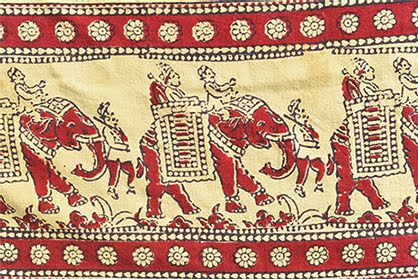
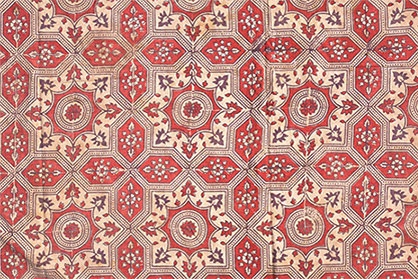
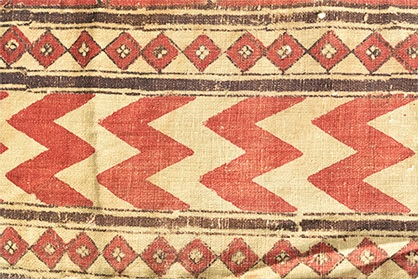
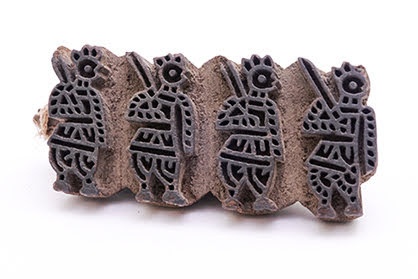
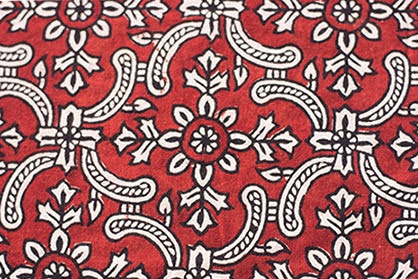
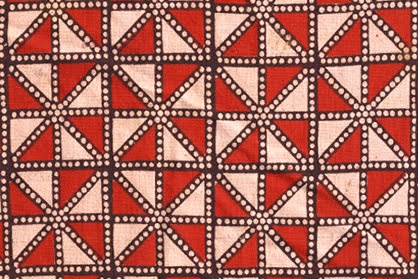
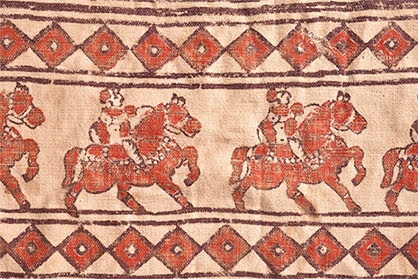
Ancient Indian boardgame
Chaupad
Tales of Chaupad are inextricably woven into Indian mythology and folklore. It’s not common knowledge that our modern favourites like Ludo and Chess originated from the ancient Indian game of Chaupad.
The chaupad motif was often block printed in the center of a jajam where two to four players could enjoy throwing the dice and racing their pawns around a four-arm path. Thus jajam created an entertaining gathering spot during a village council meeting. While the game no longer features in modern village life, references to it and reminiscences are still embedded in Indian culture.
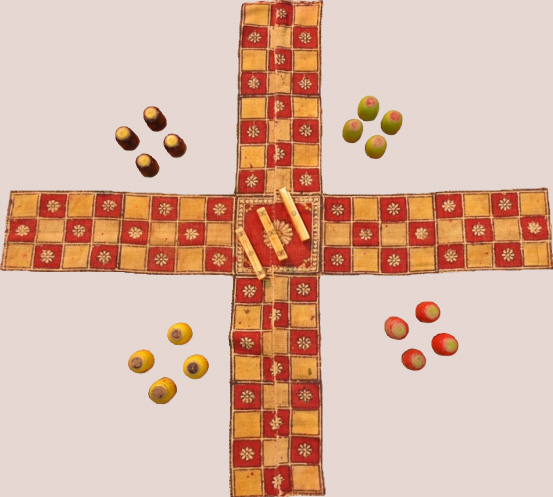

Crafts
Block Printing
The labour-intensive nature of block printed fabric requires a community of artisans — chhipas printers, rangrez dyers, dhobis washer men and block carvers. Jajam making reflected the pinnacle of craft practices of chhippa block printers. These artisan communities were usually nestled alongside rivers where the deep red and black hues of the natural dyes would be washed in the free-flowing stream.
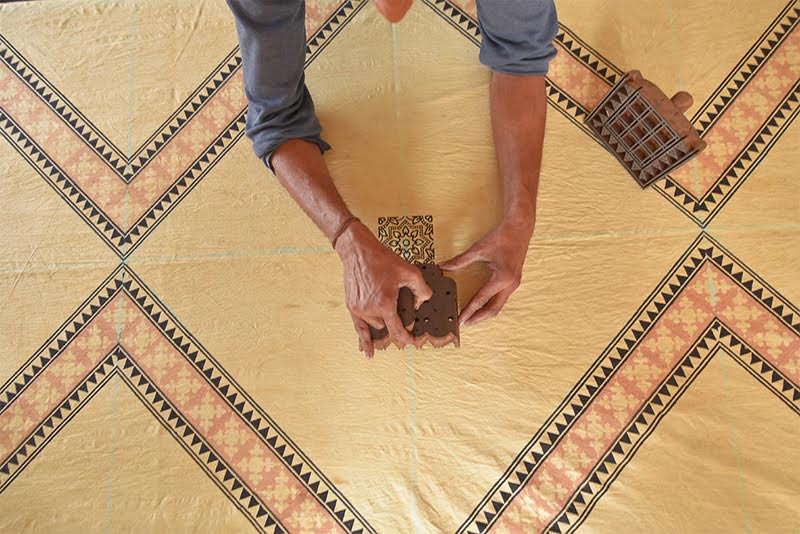
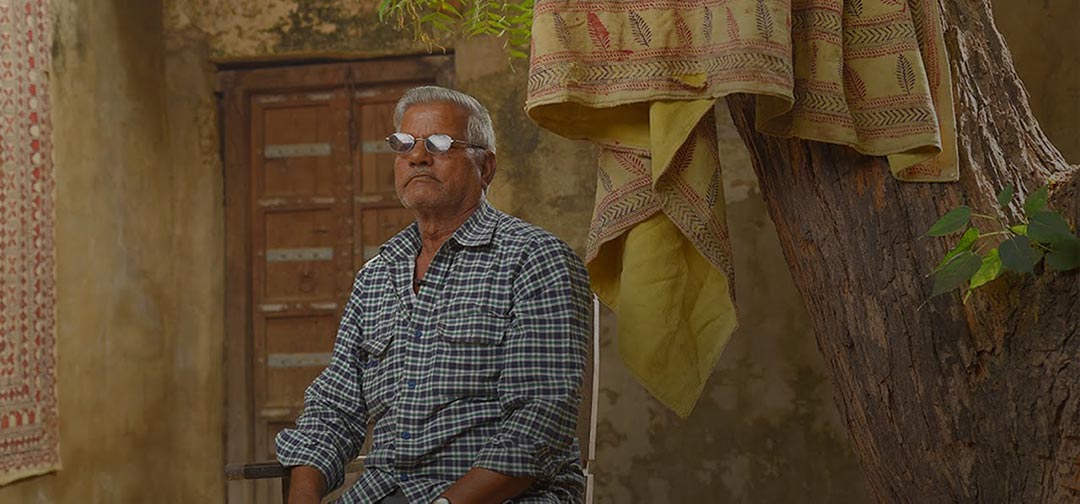
Krishna Gopal Chhipa reminiscences about the festivities of Akhateej. He speaks of the auspicious day when many marriages would take place and bring a heavy demand for jajam. History mirrors the significance of jajam as a token of camaraderie within various communities such as Rao, Rajput, and others.
Block Carving
Surrounded by multiple border and complex centerfield designs, jajam making required a wide repertoire of blocks. The richness of the seasoned wood with the skills of the Kharadi (wood carver) community contributed to a sharper image in the print that would outlast the cheaper alternatives that eventually flooded the market.
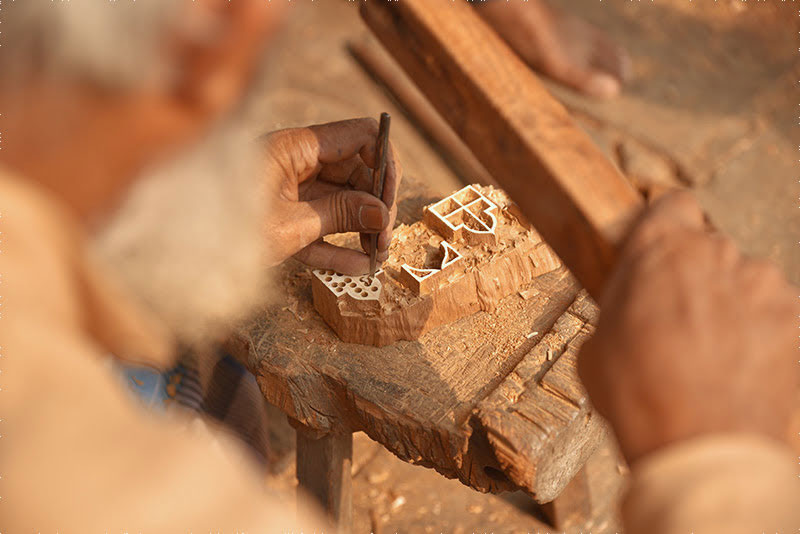
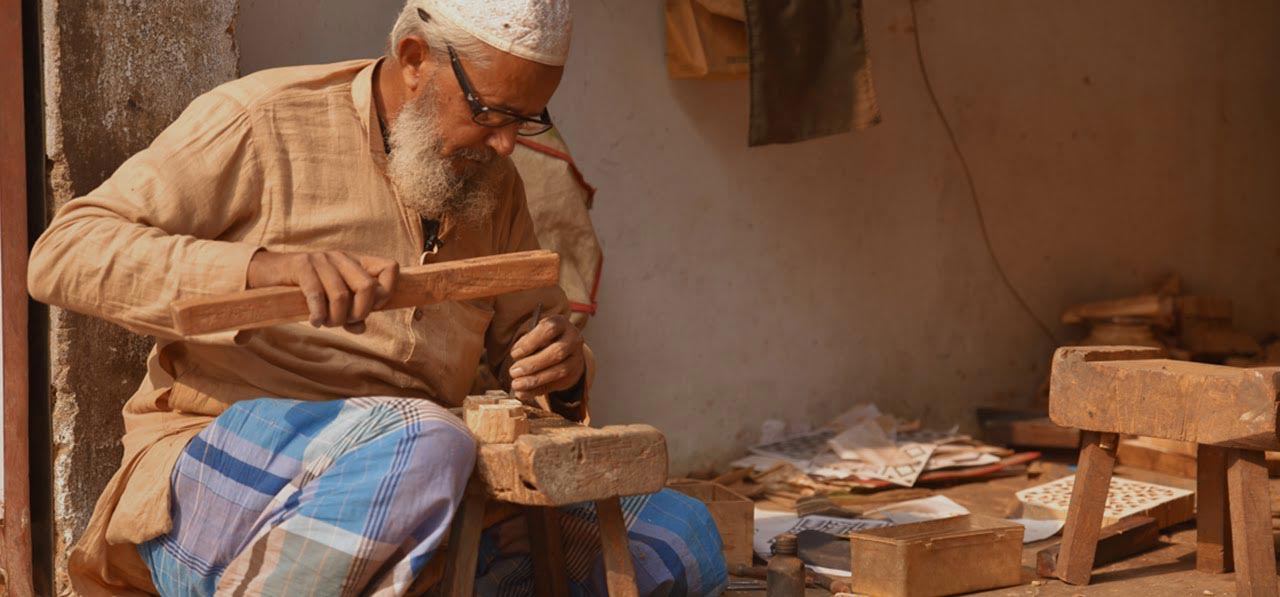
Abdul Sattar Kharadi shares the long history of block carvers he descended from. In his story, he narrates the tales of Sheik Allaudin, who traveled from Multan to Sanganer around 350 years ago. During the development of Jaipur, his ancestors were relocated to Purani Basti. The craft held dear by his community focused on finesse achieved through blocks made of a superior quality.
Namda
The sheep wool waste generated from dhurries and decorative floor mats in many parts of Rajasthan is used in the making of jajam blocks. This specialised craft that very few practices help in printing the natural dye color evenly.
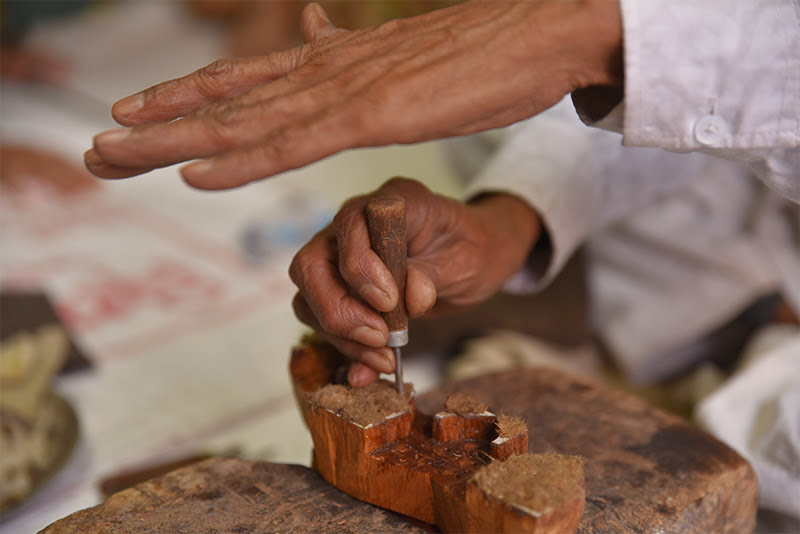
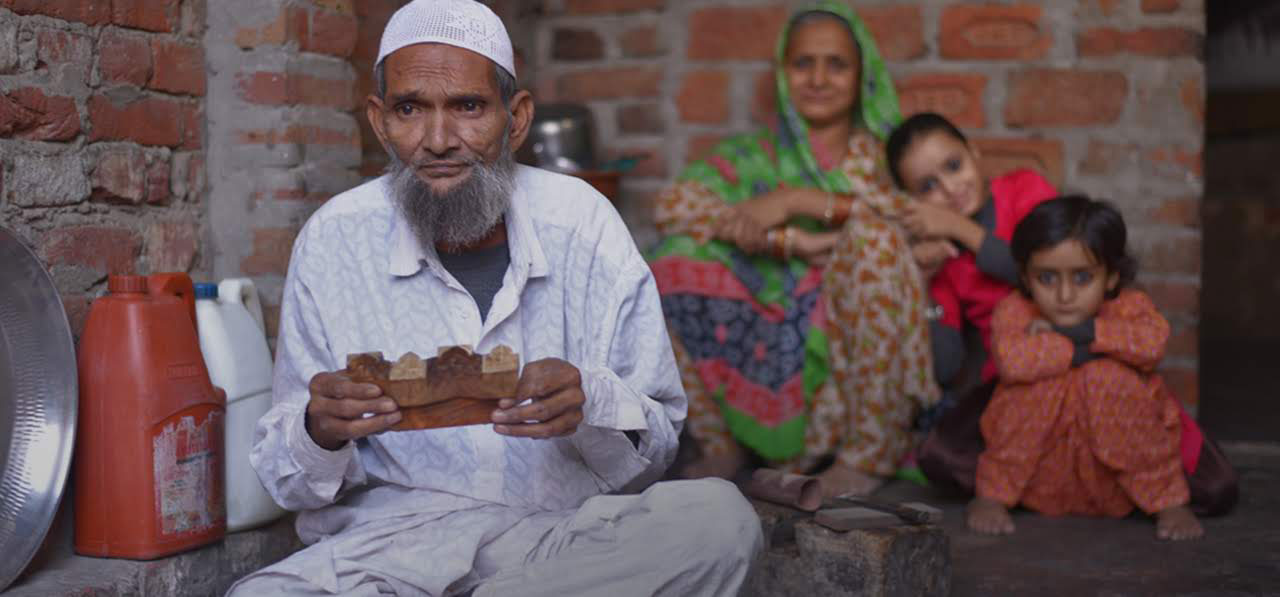
To know if the wool has been filled in properly, Rashid Ahmed uses his palm to apply required pressure on the tool. The sensitized palm help him determine the accuracy of the process.
Artisans
A craftsman translates designs in his mind with impeccable hand-eye coordination. Jajam is an outcome of the invaluable contribution of several craftspeople across Rajasthan. Amongst the myriad of craftsmen, below is an assemblage of block printers and makers who helped us rediscover this art form.
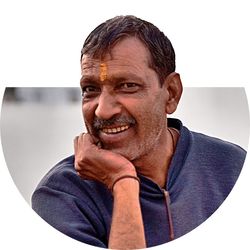
Purushottam Chippa
Jahota, Jaipur District
Purushottamji is a master printer based at Badagaon village, a region earlier renowned for Jajam Prints. His Jajam prints and Sodiya has garnered him recognition. He vividly remembers his forefathers selling printed Jajam at Hatwada, a weekly bazaar in Jaipur. On our request, Purushottomji’s family printed us traditional Jajam in great enthusiasm.
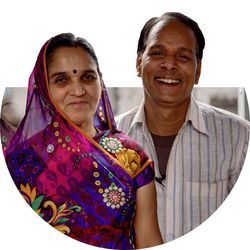
Nandkishore Nagar
Masuda, Ajmer District
Nandkishore Nagar envisaged a new product line although Jajam printing was not his ancestral work. He innovated with designs and sizes(bedsheets) and showcased them in craft exhibitions. Nagarji’s Wife gave unwavering support in keeping his now defunct printing workshop alive. He is now caretaker at a community temple at Pushkar.
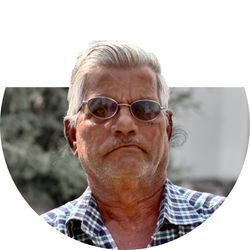
Krishna Gopal Chippa
Shree nagar, Ajmer District
Brought up in a family of households, Krishnagopalji learnt the craft while assisting his father. He pursued printing and carried forward the legacy of his family.He mainly catered to local market and demand. Today he spends his retired life reminiscing his eventful printing days.
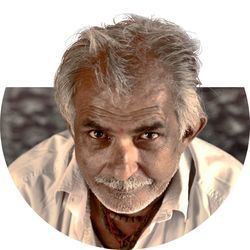
Chagganlal Khatri
Samdari, Barmer District
To counter dwindling demand, printer Chagganlal Khatri took commissioned Jajam work for ritualistic purposes catering to local demand. Khatri switched to chemical dyes from traditional natural colors. Currently, he is the only printer who exclusively prints Jajam.
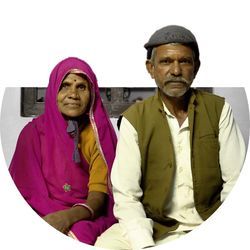
Ramdayal Chippa
Jotayan, Ajmer District
An energetic person, he mainly printed Sodiyas. To overcome the dearth of carvers in village outskirts, he acquired multiple skills and turned a block carver-cum-printer. His wife assisted him in meeting his deadlines throughout his printing journey. Withdrawing from printing, today they overlook their farmland and children in their ancestral village.
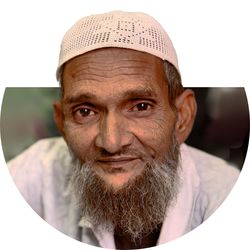
Rashid Ahmed
Jaipur, Jaipur District
Rashid Bhai is equipped with a rare skill of filling Namda (sheep wool) inside wooden blocks. He delicately filled wool in our newer blocks enabling it to absorb dyes uniformly. Despite old age, his sensitised palms and sharp eyes enthuse him to fill blocks at his house.
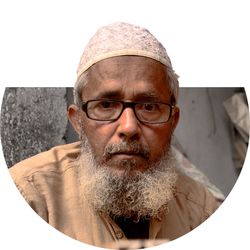
Abdul Sattar
Jaipur, Jaipur District
Sattar Bhai of kharadi community is a resourceful craftsman with diverse collection of Jajam blueprints. He is a classical old wise man who believes in sharing his skill and knowledge of the craft. Our Journey would have been incomplete without his poise & patience as we explored his treasure.
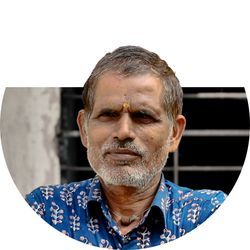
Nathulal Chippa
Bagru, Jaipur District
As someone who shared our vision of the craft, Nathulalji was the first printer at our workshop. He helped us recreate some of our earliest Jajam in traditional form. He continues printing variety of products to showcase at craft exhibitions across the country.
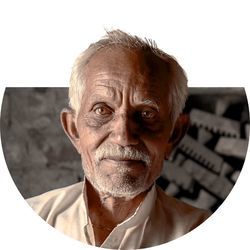
Seduram Chippa
Bagru, Jaipur District
Seduram Chippa learnt block printing from his father at a tender age of 7. An explorer at heart, he gained proficiency in farad printing, gold and silver printing. Our first sampling under his aegis encouraged us to kickstart our own workshop. Aged 75, he now works as a freelance consultant-cum-trainer and is revered for his proficiency in the craft.
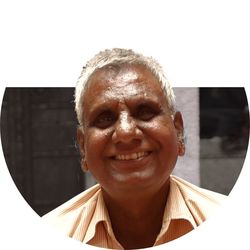
Ramswaroop Chippa
Jairampura, Jaipur District
Ramswaroop Chippa imbibed printing skills by inheritance from his gifted father Devi Sahay Chippa. He reminiscences his childhood days spent helping his father sell his Jajam at Jaipur’s weekly bazaar. Today, he continues printing in the same ancestral workspace, albeit with chemical dyes.